This is a Bilora Bella medium format scale focus camera made by Kürbi & Niggeloh of Radevormwald, West Germany between the years of 1955 and 1958. The name Bilora Bella was the name of a long running series of inexpensive and simple, but attractive cameras made by the company between 1953 and 1966. There exist Bilora Bella models that used 127, 120, and 35mm film. Despite the many variants of the Bilora Bella line, they all had basic 2 speed shutters and meniscus lenses. Some had fixed focus, or variable focus like this Bella 3c.
Film Type: 127 roll film (eight 4cm x 6.5cm exposures per roll)
Lens: 70mm f/8 Bilora Achromat uncoated single element meniscus
Focus: 3.5 feet to Infinity
Viewfinder: Scale Focus
Shutter: Spring Tensioned Metal Blade
Speeds: B, 1/50, and 1/100
Exposure Meter: None
Battery: None
Flash Mount: Cold Shoe with PC M flash sync
Manual: http://www.cameramanuals.org/pdf_files/bilora_bella.pdf
History
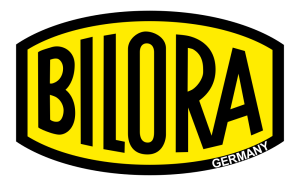 Bilora is a German company that still exists today as a maker of tripods, flashes, backpacks, and other photographic accessories. They have long since abandoned actual camera production, focusing entirely on the accessories market.
Bilora is a German company that still exists today as a maker of tripods, flashes, backpacks, and other photographic accessories. They have long since abandoned actual camera production, focusing entirely on the accessories market.
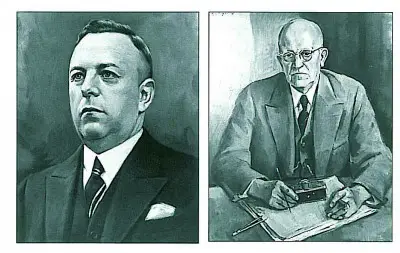
The company can trace it’s roots back to 1909 when it was founded by Wilhelm Kürbi and Carl Niggeloh as Kürbi & Niggeloh. The company started in almost the same industry as they continue today, making accessories like tripods, stands, and other similar products like hat and sheet music stands. They seemed to have almost immediate success as by 1911, they expanded into a new warehouse in Radevormwald where the current company headquarters still remains.
According to Bilora’s current website history page, in 1919 the company would begin using the brand name “Bilora” for it’s products. The name Bilora was made up of the letters of the names KürBI NiggeLOh and RAdevormwald. It is unclear when the company officially stopped using the name Kürbi & Niggeloh, but it was at least after the 1950s. For the purposes of this article, I will refer to them officially as “Bilora”.
Bilora would continue to be a leader in the tripod and photo accessory industry until 1935 at which time they would release their first camera, a simple box called the Bilora Box. Like most box cameras, the original models were made of stamped metal, and had simple meniscus lenses and single-speed shutters. There was nothing particularly advanced or innovative about Bilora’s cameras, so perhaps they were sold to accompany their tripods.
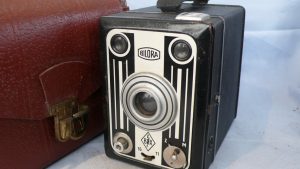
Camera production would be interrupted at the onset of World War II, and would not resume until 1946 at which time, Bilora would expand their box camera offerings to many different variants, all using the Bilora Box name. Collectors have assigned names such as Box 1, 2, 3, etc to their names as there seemed to be a lot of different versions available. It was also at this time, that Bilora began the practice of manufacturing cameras for sale by other companies. One of the first instances of this was for the American department store chain, Montgomery Wards, who sold a Bilora made box camera called the Wardette. Over the years, Bilora would make cameras for Voigtländer, Gevaert, ANSCO, Yashica, and several others.
In the 1950s, Bilora would expand their camera lineup beyond the simple metal box camera. The first was a Bakelite viewfinder camera called the Bilora Boy, but eventually their portfolio would include a large variety of models with names like Radix, Bonita, Bellina, and Bella.
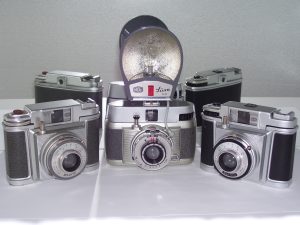
The Bella lineup was the company’s most successful, but that’s largely in part to the fact that there were so many different types of Bellas made. To simply describe a camera as a Bilora Bella does little to identify the camera as models were made for 35mm, 120, and 127 roll film. They made images with aspect ratios of 4×4, 4×6, 4×6.5, 6×6, and 24x36mm. The Bella page at camera-wiki.org lists no less than 36 different versions of Bella cameras.
The model being reviewed here is commonly referred to as the Bella 3c. I don’t believe the suffix ‘3c’ was officially given to the camera as it appears nowhere on the camera or in it’s user’s manual. It’s possible this was an identifier used by Bilora internally for the camera, or it could have just been invented by collectors as a way to uniquely identify this model.
The Bella 3c seems to have been one of Bilora’s most popular models as it was in production from 1955 – 1958, which is longer than most models which seem to only have existed for a year or two.
Almost all Bella models, like most Bilora cameras, were simple scale focus cameras with 1 or 2 speed shutters and single element lenses with maximum apertures of f/8 and smaller. It wouldn’t be until around 1960 when some models were equipped with slightly more advanced Rodenstock lenses.
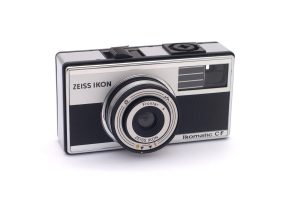
The last Bella models were made in 1964 at which time the company mainly stuck to inexpensive 126 “Instamatic” film cameras. By this time, a majority of Bilora’s production output was for models made for other companies such as the Zeiss-Ikon Ikomatic, and Yashica Minipak.
Bilora would stop making cameras around 1975 and resume it’s original focus as a maker of photographic accessories such as tripods, stands, and carrying cases. I hesitate to call Bilora a success or a failure as they have managed to stay in continuous operation for over 100 years and today, are still in the same industry as the one they started in over a century ago. Their cameras never aspired to be more than inexpensive and simple designs, and when found today, usually still work quite well.
Today, most collectors are aware of the Bilora brand, mostly due to the massive number of different models that were made. Their often unique turquoise body colors are memorable, and when found in good working condition are decently capable cameras. The blue Bellas like the 3c seem to be the most collectible, but others like the rebranded ANSCO Lancer, and the 6×6 Bellas have a pretty loyal following too. Considering their modest specs, these cameras rarely fetch high prices on the used market, making them quite attractive to collectors looking for something unique in their collection.
My Thoughts
The Bilora Bella’s blue body is an attention grabber, and it was the first colored camera I ever had in my collection. I picked this camera up in early 2016 knowing it used 127 film, and at the time I had no desire to locate 127 film to test the camera. I figured I would allow myself the occasional shelf-queen so I picked it up as a pretty display piece.
By mid 2017 however, I had not only come across some viable 127 film, but had developed an excitement for the format through shooting models like the Yashica 44, Kodak Vollenda 48, and Detrola Model E. I knew I would have to revisit my decision to shelve this beauty of a camera, and actually shoot it, so this summer I made the decision to load up the Bilora and see what it could do.
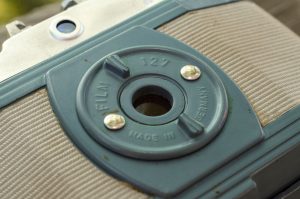
The first step when loading film into the Bella is to open the film back via the round wheel on the back of the camera which acts as a lock for the film compartment. I found that this wheel fits on quite tight and can be a challenge to take off if the camera has sat a while. The film back is not hinged and comes completely off the camera when opened.
I loaded in a roll of very expired Kodak Verichrome Pan with the assumption I should have no problem getting good results from it as VPK is one of the most viable films I’ve ever encountered. I’ve gotten great results from similar film that expired in the late 1970s, so I figured a good 2 stops of overexposure would fit the camera’s limited 1/50 and 1/100 shutter speeds nicely.
Loading film in the Bilora was not as easy as it has been in other 127 format cameras. The struggle with 127 compared to other roll film formats like 120 is that there is a two pronged “shaft” that extends beyond the spool flange. This shaft needs to go into a specific recess on both ends of the takeup and supply sides. In order to properly seat the spool, the Bilora has two pieces of metal that must be pulled away while inserting a new spool. I found the implementation of loading film into the camera to be clumsy. Like most roll film formats, you must load the paper leader onto the takeup spool and spin it a few times to make sure it is secure, but due to the smaller size of 127 spools, this is more difficult with the spool already in the camera, so I threaded the spool with it out of the camera. While that made threading the paper leader easier, it had the opposite effect when loading the takeup spool into the camera with the leader already attached. I can’t really explain it further, so I’ll just leave it as it wasn’t a pleasant experience.

The Bilora Bella has a single element meniscus lens which was a common type of lens used in basic cameras in the first half to middle of the 20th century. Meniscus lenses have the advantage of being inexpensive to make, but they have a habit of extreme softness near the edges because it is difficult to maintain sharpness across a flat film plane with only a single element.
In an effort to improve sharpness using the simple lens, Bilora designed the Bella to have a curved film plane. By curving the film plane, the edges of the exposed image will maintain a closer distance to the focal center of the image, improving sharpness. This was a trick that several other makers of budget cameras employed, and it certainly helped the image quality on these models.
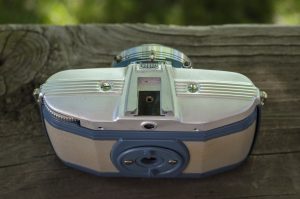
Perhaps a side effect of the curved film plane is that the Bella’s body is thicker in the middle than the edges, so it has somewhat of a football shape. While this probably made sense from a design standpoint, the slanted sides have a negative impact on keeping a secure grip while holding the camera as there’s really no secure way to grip the camera with your fingers. Thankfully the body has two strap lugs so you can attach a neck or wrist strap to the camera, something I would strongly recommend if you intended to put a Bella into regular use.
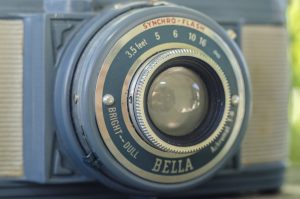
In terms of exposure settings, the shutter speed selector is on top of the camera immediately in front of the Bella logo. Your only choices are 50, 100, and Bulb. The aperture control is on the front face of the shutter, indicated by the words “Bright” and “Dull”. Like most budget cameras, the Bella does not have an iris, but rather a small metal plate with two holes in it. Moving this selector chooses the larger or smaller hole. With the larger hole in front of the lens, you have an effective aperture of f/8 for “Dull” or less light situations, and around f/11 for “Bright” or sunny scenes. There exist variants of the Bella where instead of “Bright” and “Dull” are the numbers 8 and 11. I do not know why some have the numbers and some have the words.
Although the Bella is technically a full focus camera allowing the front element to be rotated from a minimum distance of 3.5 feet all the way to infinity, focus throw is quite small, especially for a scale focus camera. Despite this perceived limitation, the relatively small apertures of f/8 and f/11 allow for a very wide depth of field, so getting in focus shots shouldn’t be that hard.
The shutter release feels like a top plate shutter release, but its actually located on the front of the camera, facing skyward. I found this location to be comfortable when holding. The shutter release is threaded for a shutter release cable if you wanted to use one.
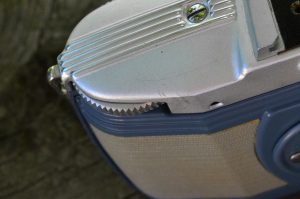
Film advance is done via a wheel on the left side of the camera, beneath the top plate. I found that with film loaded in the camera, turning this wheel had a lot of resistance. I had worried that perhaps my film was binding, but it seemed to go through the entire roll without issue. I do not know if this is characteristic of all Bellas, or if mine is just a bit tight due to age. I was using a genuine roll of 127 as opposed to some kind of hand rolled film, so I can’t imagine the film was causing an issue. Perhaps this is a side effect of a curved film plane. I’ll never really know unless I were to try shooting another Bella, which likely won’t happen, so if anyone reading this post ever finds that their film advance is a bit tight, rest assured that you’re not alone.
The Bella has no double exposure prevention and advancing the film will not stop at the next frame, so you must pay attention to the numbers on the paper backing of the film, as seen through the red window.
The best way I can describe the shooting experience with the Bella is “unremarkable”. I tried to keep my expectations in line with that of an entry level camera, so I forgave the clunky film loading process, the tight film advance wheel, and the limited controls. I was not a fan of the body shape of the camera, and although the Bella is pretty to look at it, it’s looks do not help the functionality of the camera in any way. So while I wouldn’t go as far as to say that I hated any one aspect, a combination of basic specs and a less than pleasant shooting experience means I’ll likely not use this camera very often. But how did the images come out?
My Results
Of all the places I could have chosen for my first attempt using the Bilora Bella, I chose a short trip my wife and I took to Milwaukee Summerfest in the summer of 2017. Making my choice even more peculiar was that I loaded in a 30+ year old roll of Kodak Verichrome Pan 127 film. Verichrome Pan has a reputation of being able to withstand many decades of age, well past it’s expiration date. I have heard of guys successfully getting images off of rolls 50+ years old. The stuff has an amazing shelf life. So while I was reasonably sure I should get images from it, the fact that I used it in a camera with only 2 shutter speeds and 2 aperture sizes was probably not the wisest choice I could have made.
Still, if I got anything from the roll, it would be interesting to see what 30+ year old black and white film looked like shot in a 62 year old camera.
I developed this roll of Verichrome Pan myself using a mixture of 8ml of HC-110 and 500ml of chilled (~ 45-50 degrees F) water. I left the film in the tank for a total of 10 minutes, agitating the film for 15 seconds, every 30 seconds. This was my first time developing film this old and I was recommended this method by my friend Adam. I was on pins and needles as I opened the tank to reveal the spool and what looked to be 8 perfectly exposed images!
After letting the film dry and scanning it into the computer, I was impressed at how well the images had turned out. Both from a film standpoint and what the camera was able to deliver. The contrast was pretty good in all of the images, and only needed a very slight nudge of the levels in Photoshop, but what you see here is mostly straight out of the scanner.
Sharpness is pretty impressive for a meniscus lens. Bilora’s decision to use a curved film plane rather than a flat one was definitely a good choice here as it minimized the effect of softness near the edges. It’s certainly there, but not as bad as it could have been. Vignetting is evident in every image, especially the ones where the sky is visible, but I think it nicely compliments the distressed look of the vintage film.
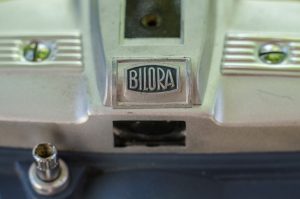
Exposure was amazingly accurate using the camera’s 2 shutter speeds. It’s hard to tell, but about half of these shots are in direct sunlight, so I used the 1/100 shutter speed and smaller aperture opening for those, and I opened up the lens and used the 1/50 shutter speed in the cloudy scenes.
Focus accuracy is pretty good on all images except the one of me on the ski lift. I think that asking me to correctly guess focus on a moving lift while 50 feet up in the air in the rain using a 62 year old camera was just a bit too much there. Still, I like the overall composition!
My favorite shot is the first one, of the country road. The perspective of the road to infinity, with the gloomy looking clouds, with the distress of the film, combined with what looks to be a few minor light leaks makes for a very neat image. If I was in a band, I could see this being an album cover!
Overall, these images are quite good, and despite the risk I took with my film choice, it worked out in the end. The Bilora Bella certainly is not a high-spec camera, but its good enough, and the curved film plane gets the most out of the single element lens. When using the right film, the limited shutter speeds and aperture sizes are not an issue. I didn’t care for the shooting experience and found several minor annoyances, but none that were a deal breaker. If there was one thing that would prevent repeated uses of this camera is the economy of only getting 8 shots out of a roll of 127 film. For one, 127 film isn’t as easy to come by these days, and only getting 8 images really makes this a tough sell. I really think this camera would have been better suited as a “half frame” 3×4 camera.
I am happy I took a chance with this camera and am absolutely pleased this is in my collection. It’ll likely be a shelf queen, but it’s always good to know that it’s ready to go if I ever have a hankering for some 4cm x 6.5cm shots on 127 roll film!
My Final WordHow these ratings work |
The Bilora Bella is an attractive blue bodied simple camera made in Germany by a company most people have never heard of, yet still exists today. It’s simple construction with a single element lens, 2 shutter speeds, and maximum aperture f/8 lens might seem limiting on paper, but I was impressed with the variety of images I was able to shoot with it. It is clear Bilora made the most out of what they could put into a budget minded camera. While the camera looks great on a shelf, and is capable of pretty good images, I think it falls short in terms of usage. I found several elements from loading film, advancing the film and the short focus throw to be limiting. It wasn’t enough for me to dislike the camera, but I feel like a few minor changes to the design could have dramatically improved the user experience. The Bella is pretty enough to warrant a spot on any collector’s shelf, and while it’s results won’t disappoint, there are better options in terms of usability out there. | ||||||
| Images | Handling | Features | Viewfinder | Feel & Beauty | History | Age | |
| 1 | 0 | 0 | 1 | 2 | 0 | 30% | |
| Bonus | none | ||||||
| Final Score | 5.2 | ||||||
Additional Resources
http://camera-wiki.org/wiki/Bilora_Bella
http://camerapedia.wikia.com/wiki/Bilora_Bella
http://cameras.alfredklomp.com/bella/

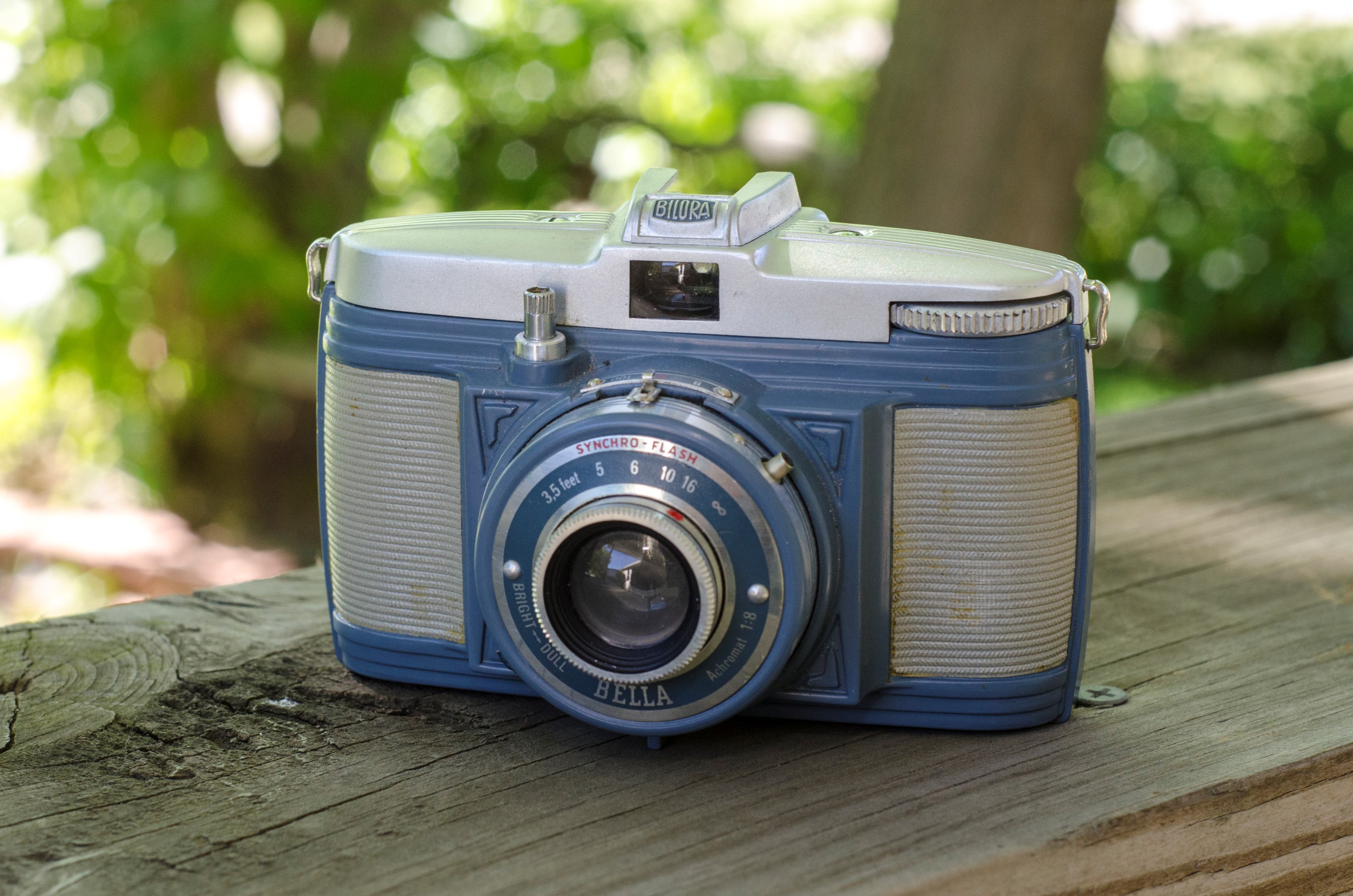

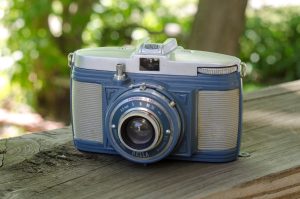








I have what i think is the same camera but it is black and silver. can you tell me if this is the same one? I came across this in my grandfathers garage and he said he got it in Germany when he was in the army
Sure thing Stephanie! Send me a message through the contact form with your email address and then I can look at some pictures of your camera.
Hello, i have this camera and i dont know how to put the film. I need help
I have a link to the camera’s original instruction manual in this review which shows how it’s done. Good luck!
Fantastic. What is the price for this specific model in the open market?
Thanks for the feedback, Shimon! I do not appraise cameras as the prices vary wildly, but a good place to start is to check out my “What is my Camera Worth?” article:
https://mikeeckman.com/2020/02/what-is-my-camera-worth/
Fascinating history and detail. I never expected to find anything more than a Google photo of a Bilora Bella camera like my brother had in 1950s. He used to carry a range-finder and an exposure meter and we used to joke then (in our pre teens) that when he was hoping to capture a photo shot of some Swans taking off from a lake, by the time he’d set up the range focus and aperture and exposure the Swans had gone! I wonder if you could do a review of the same era Ross Ensign Fullvu-Flex box camera if there’s any info out there? This was a cheap plastic body camera I had at the same time as my Brother had the Bilora. It had one shutter speed or B for Bulb mode and fixed focus.